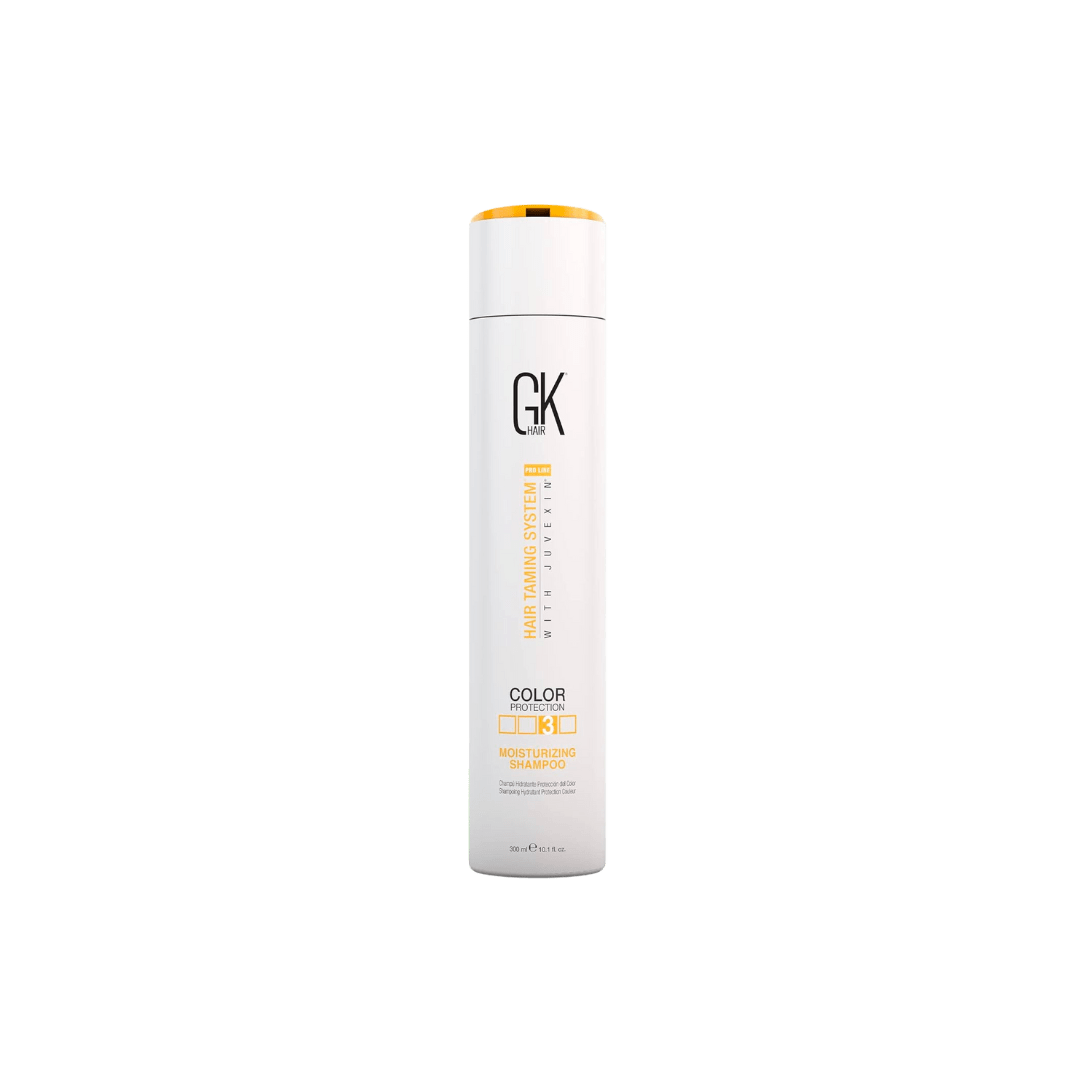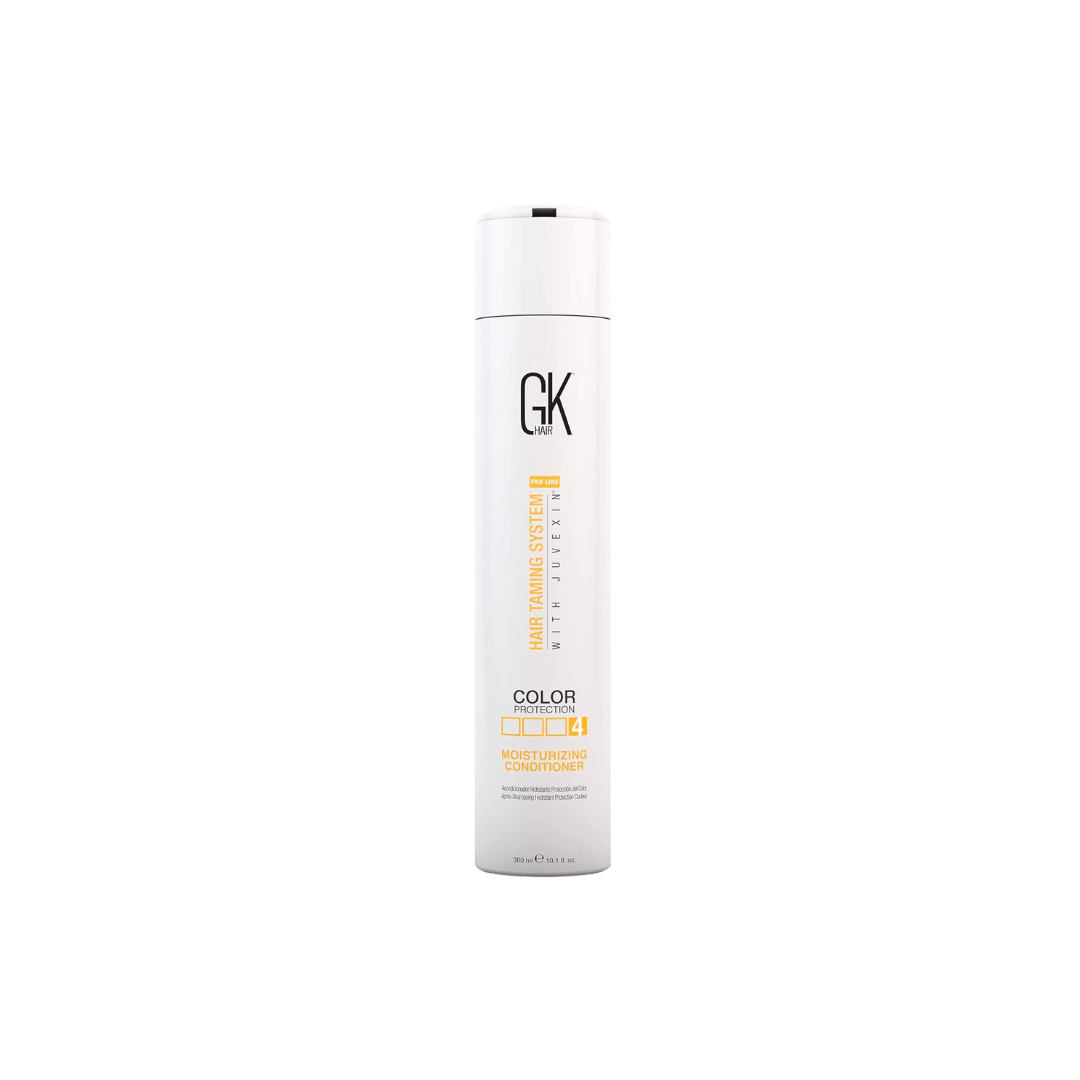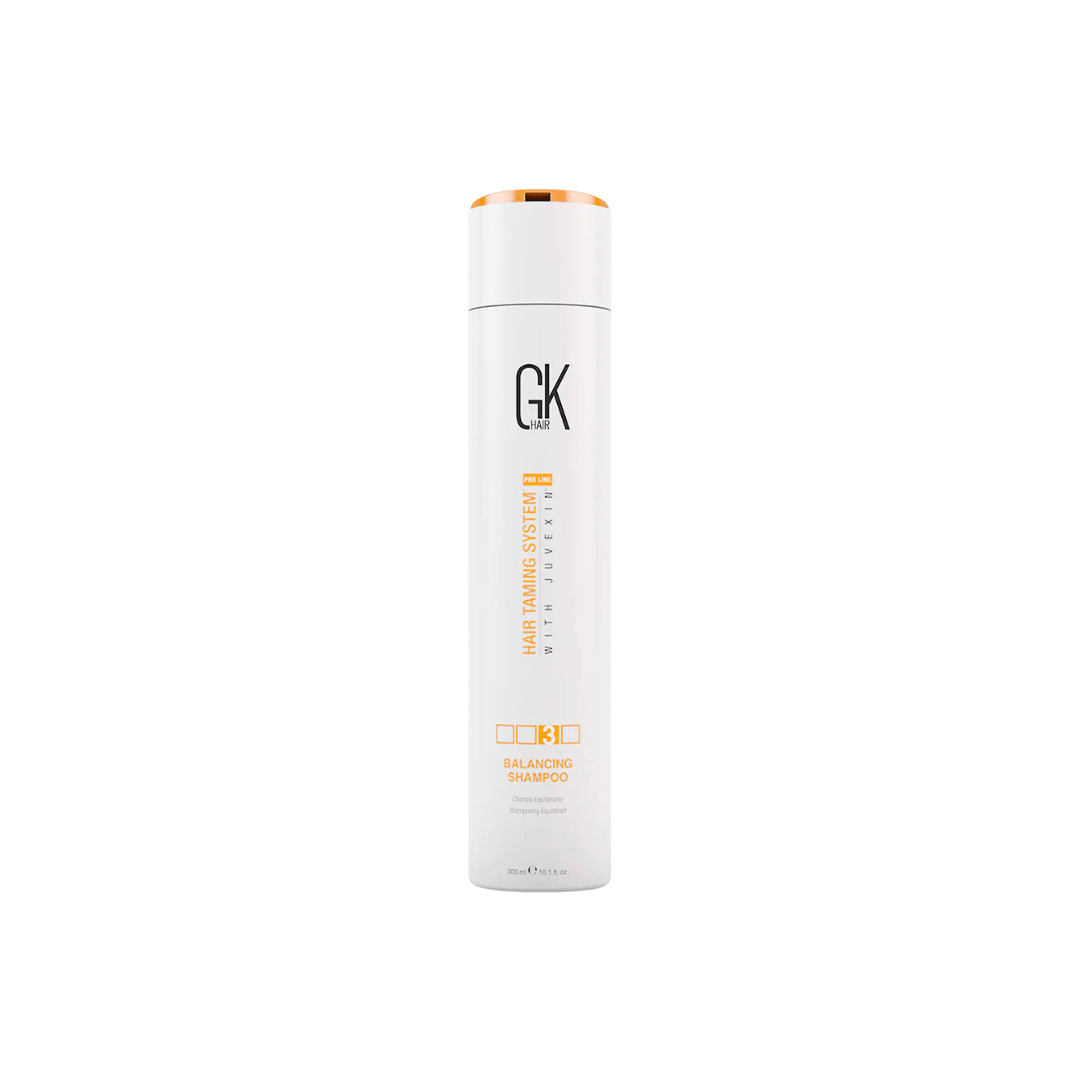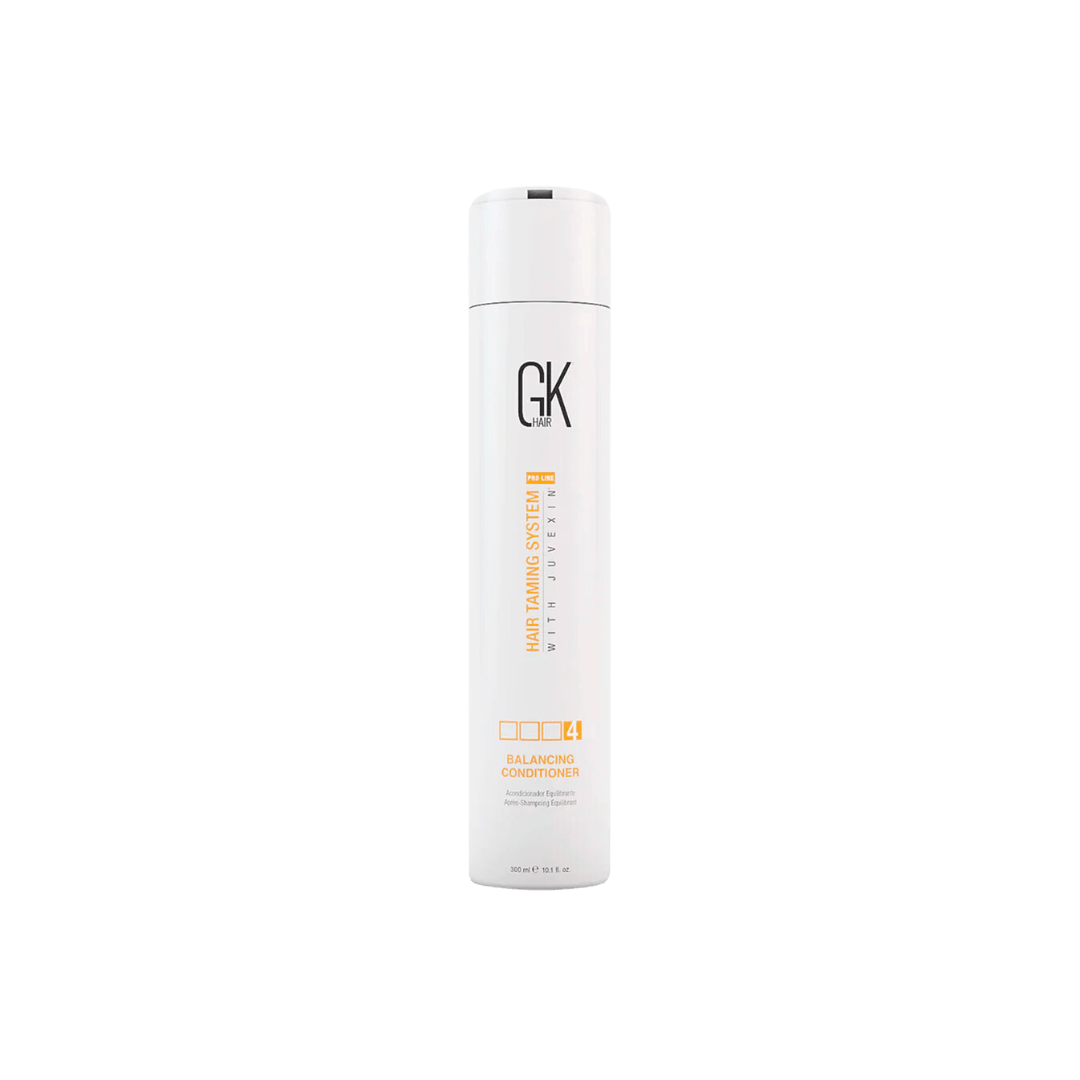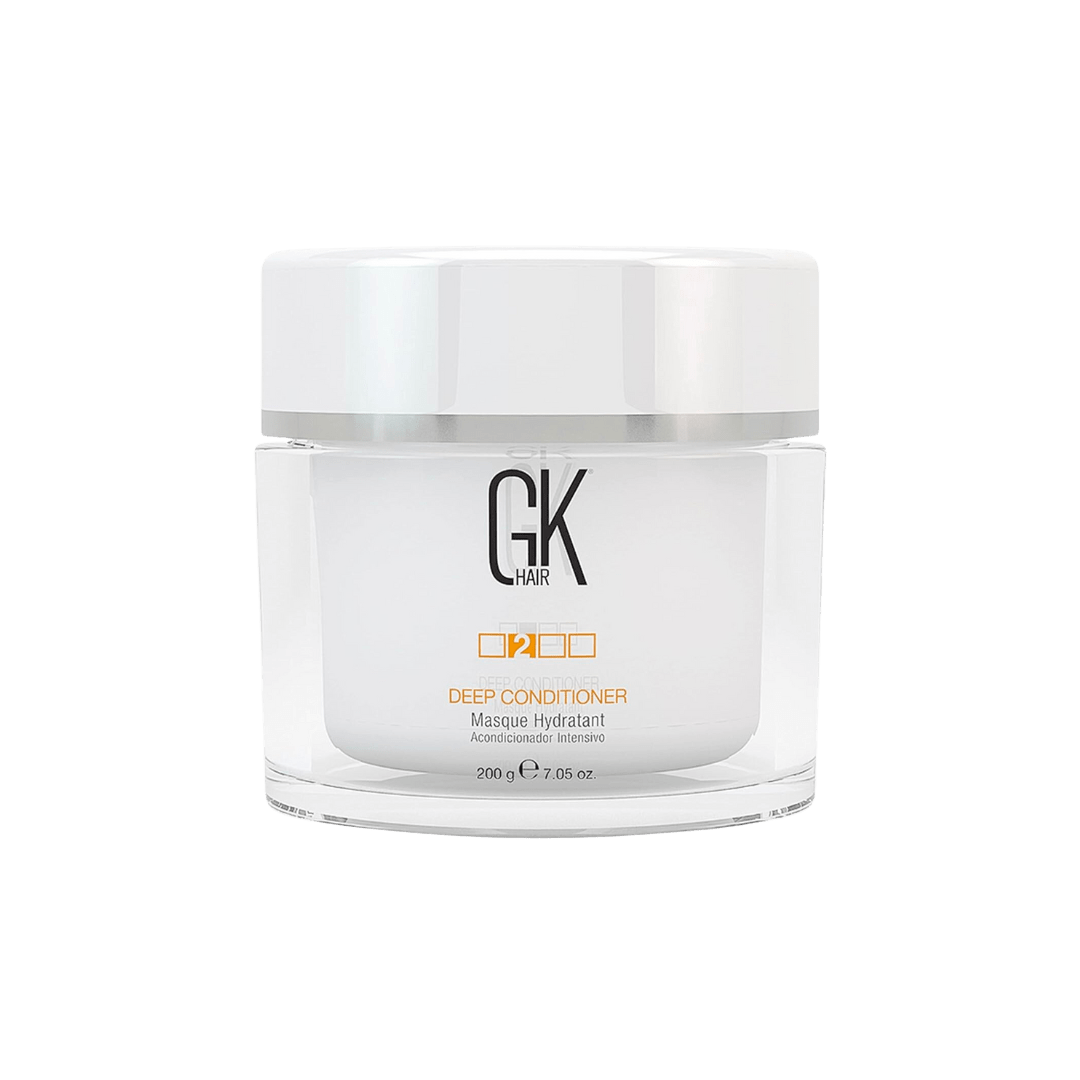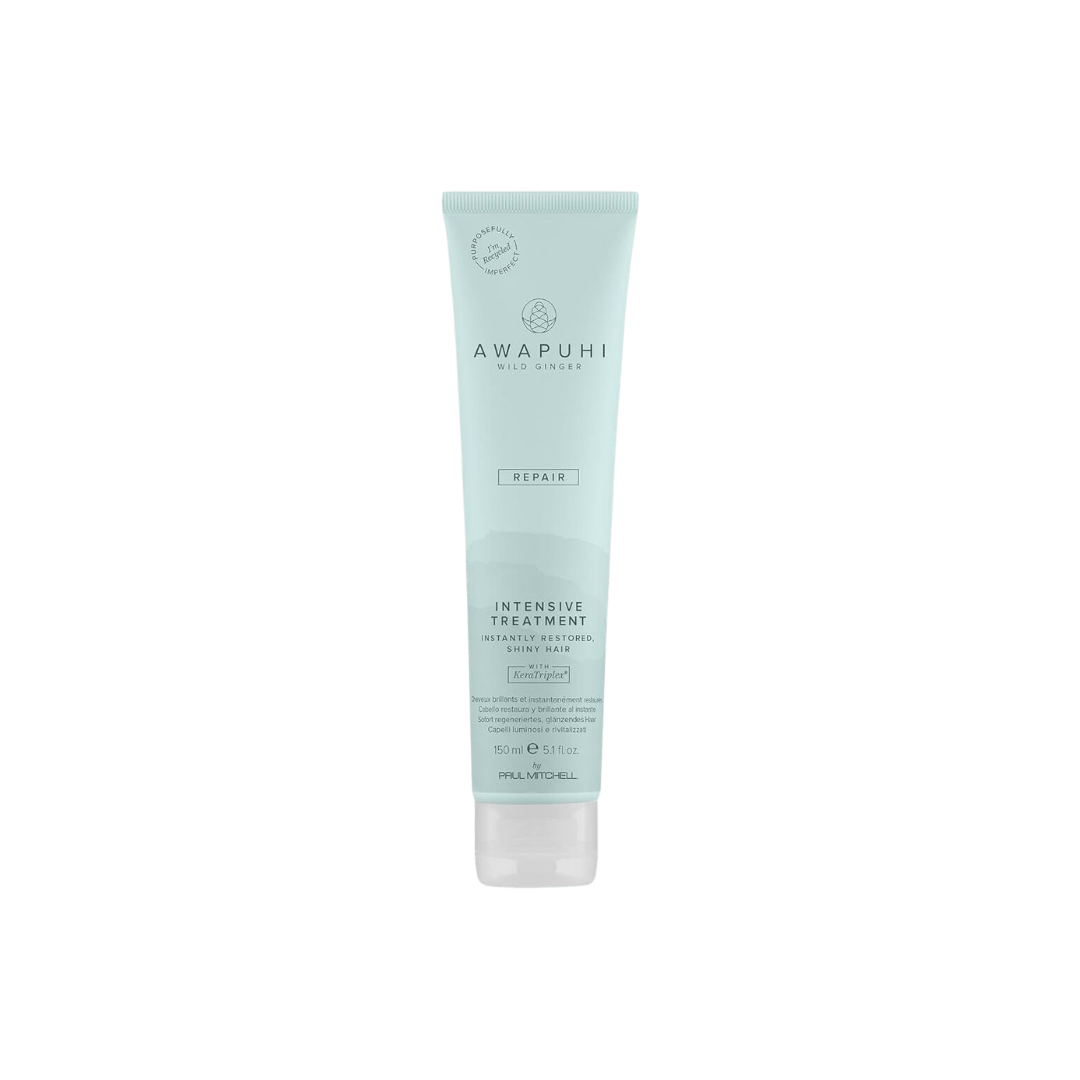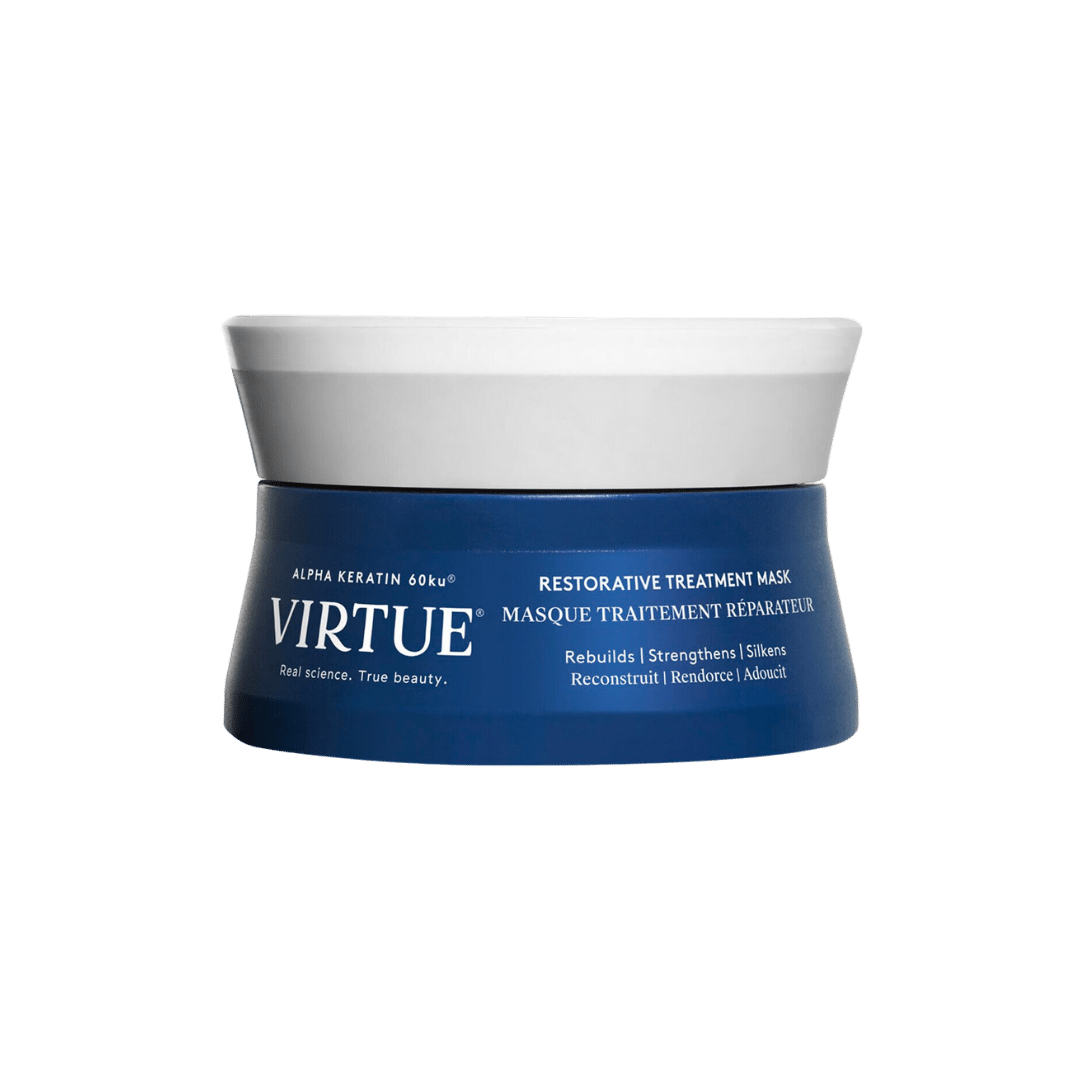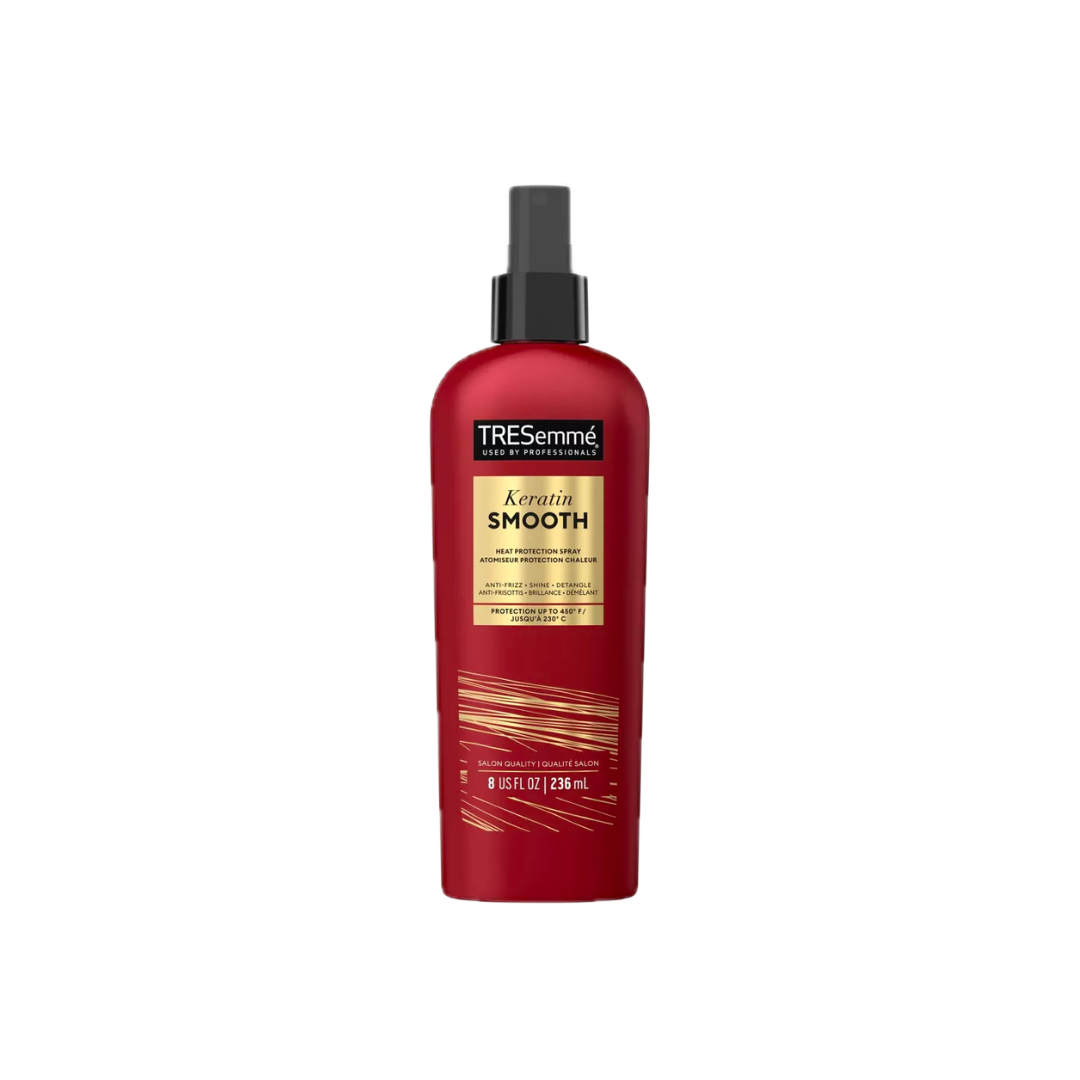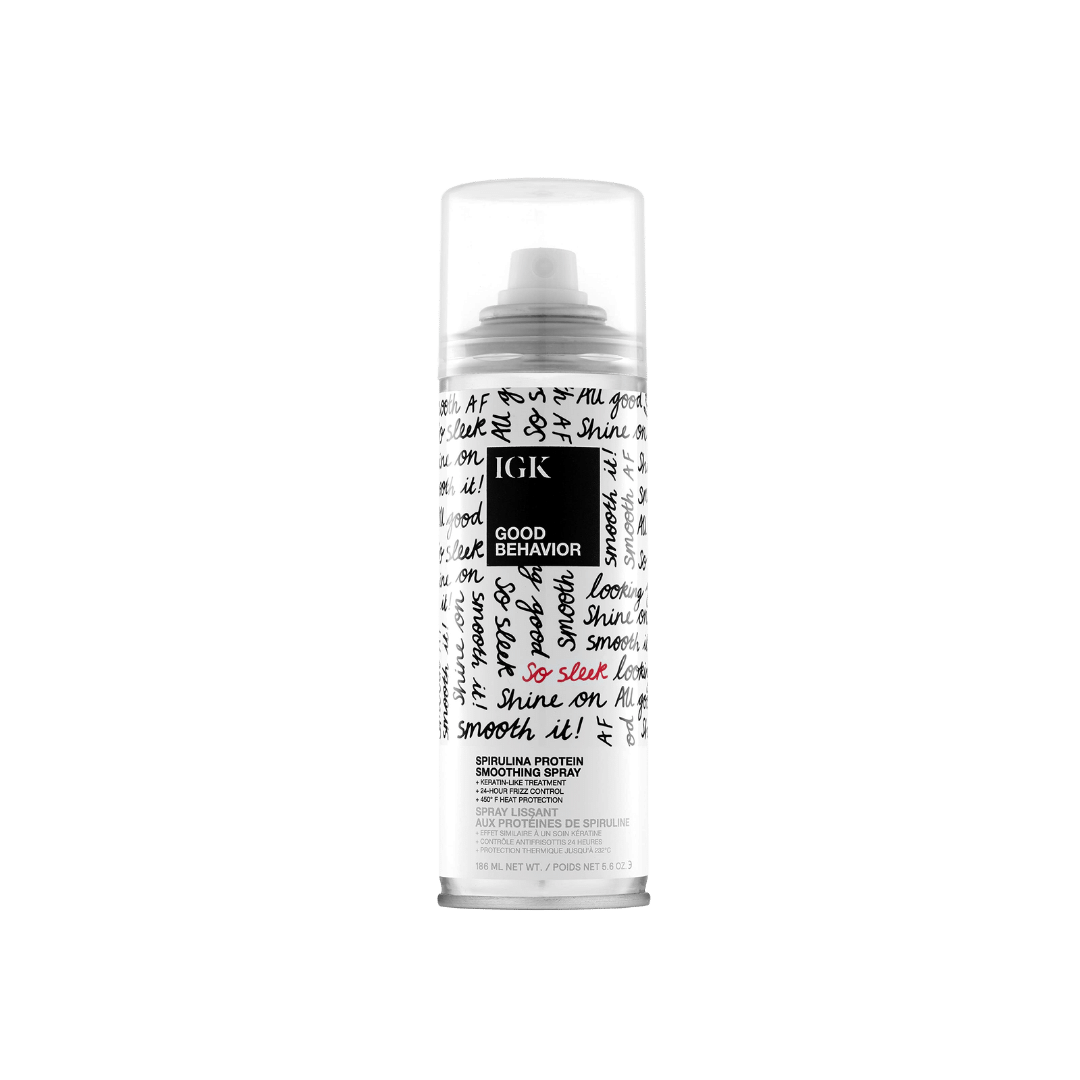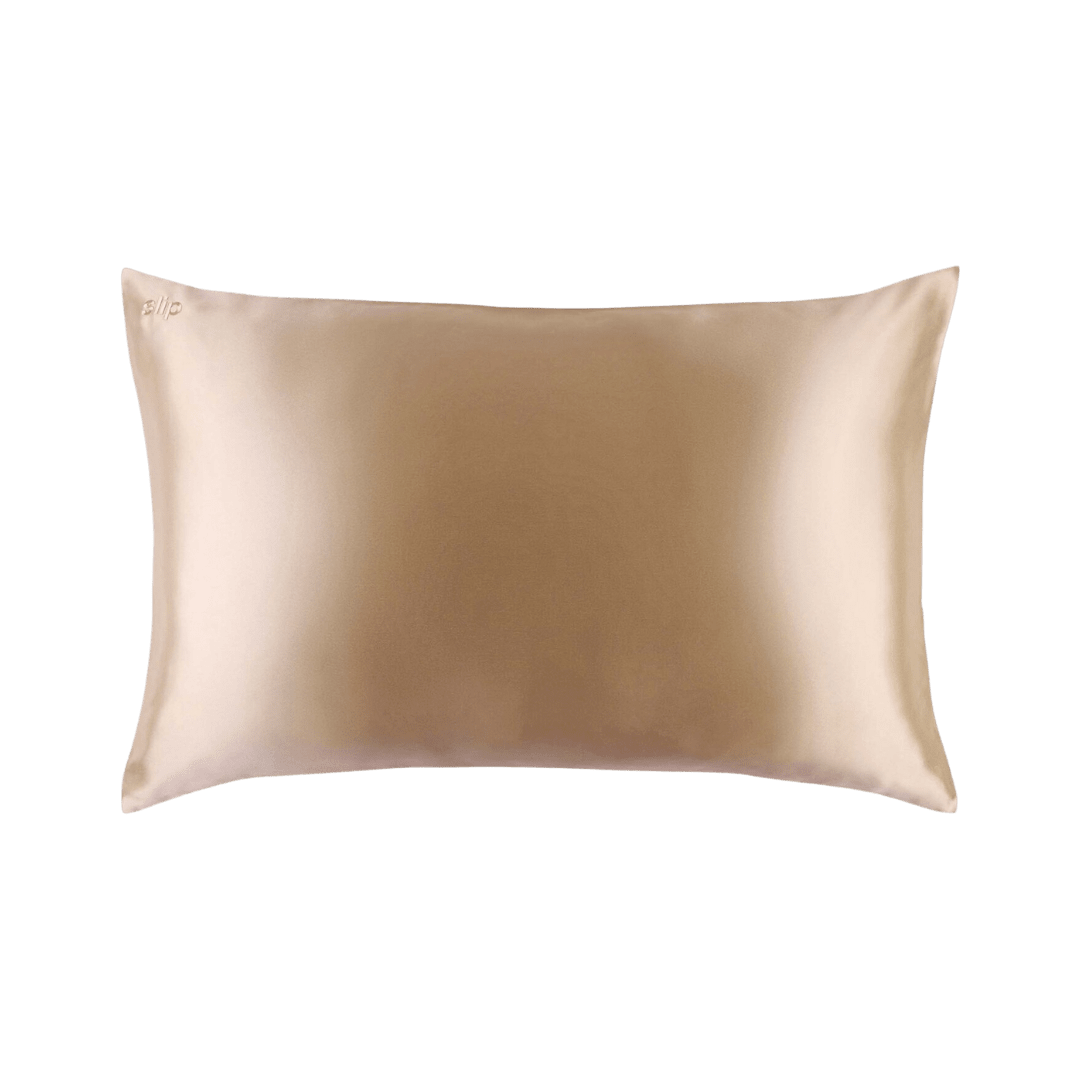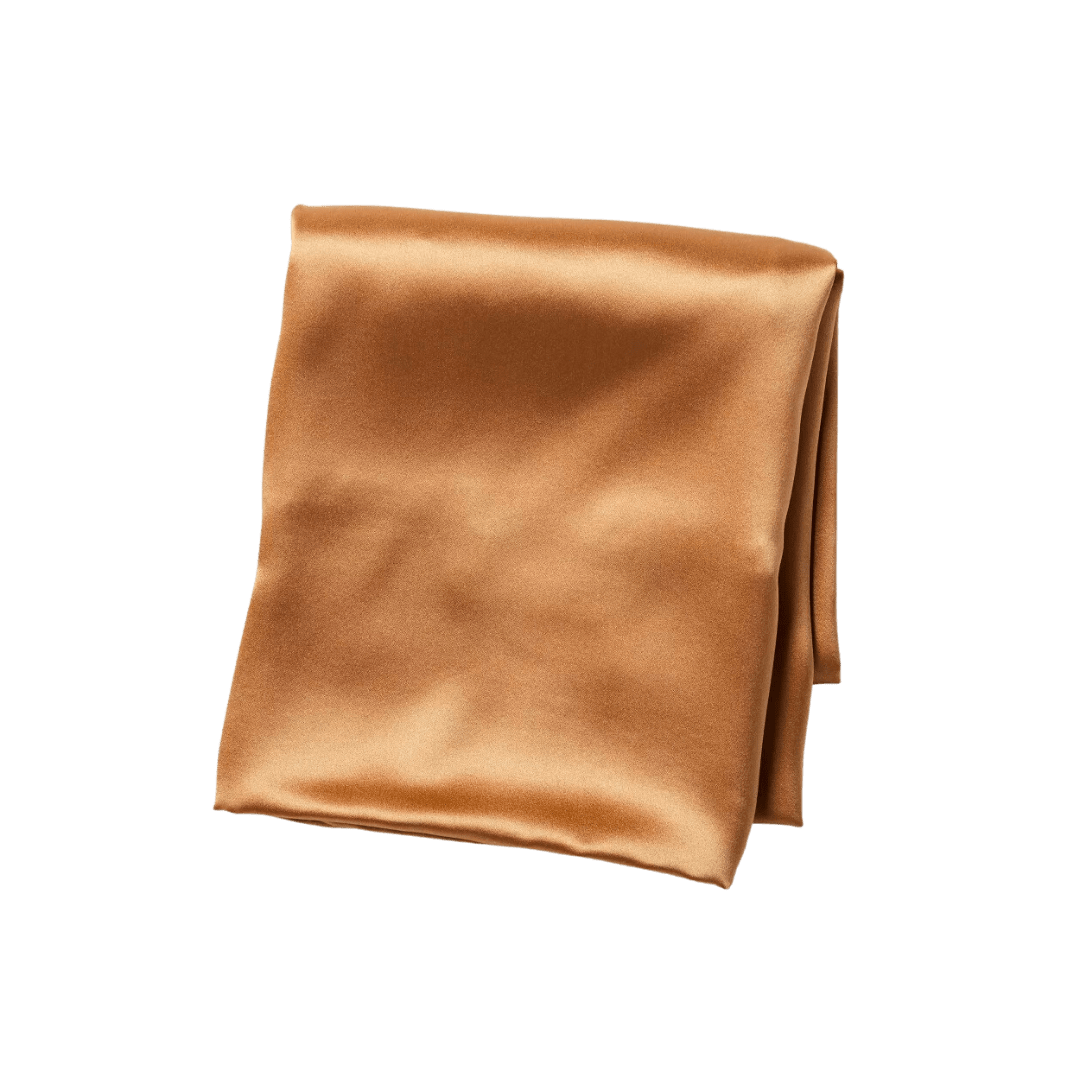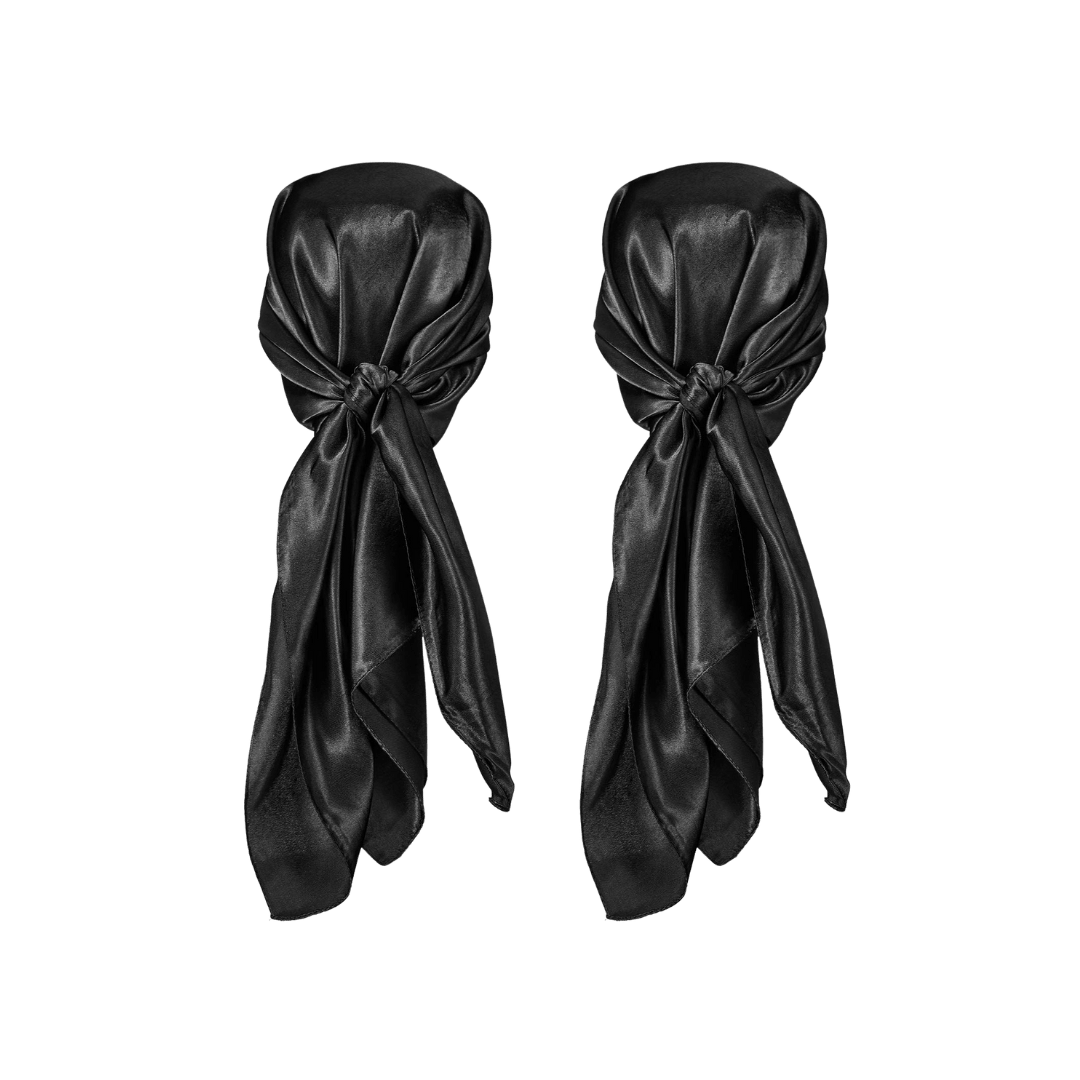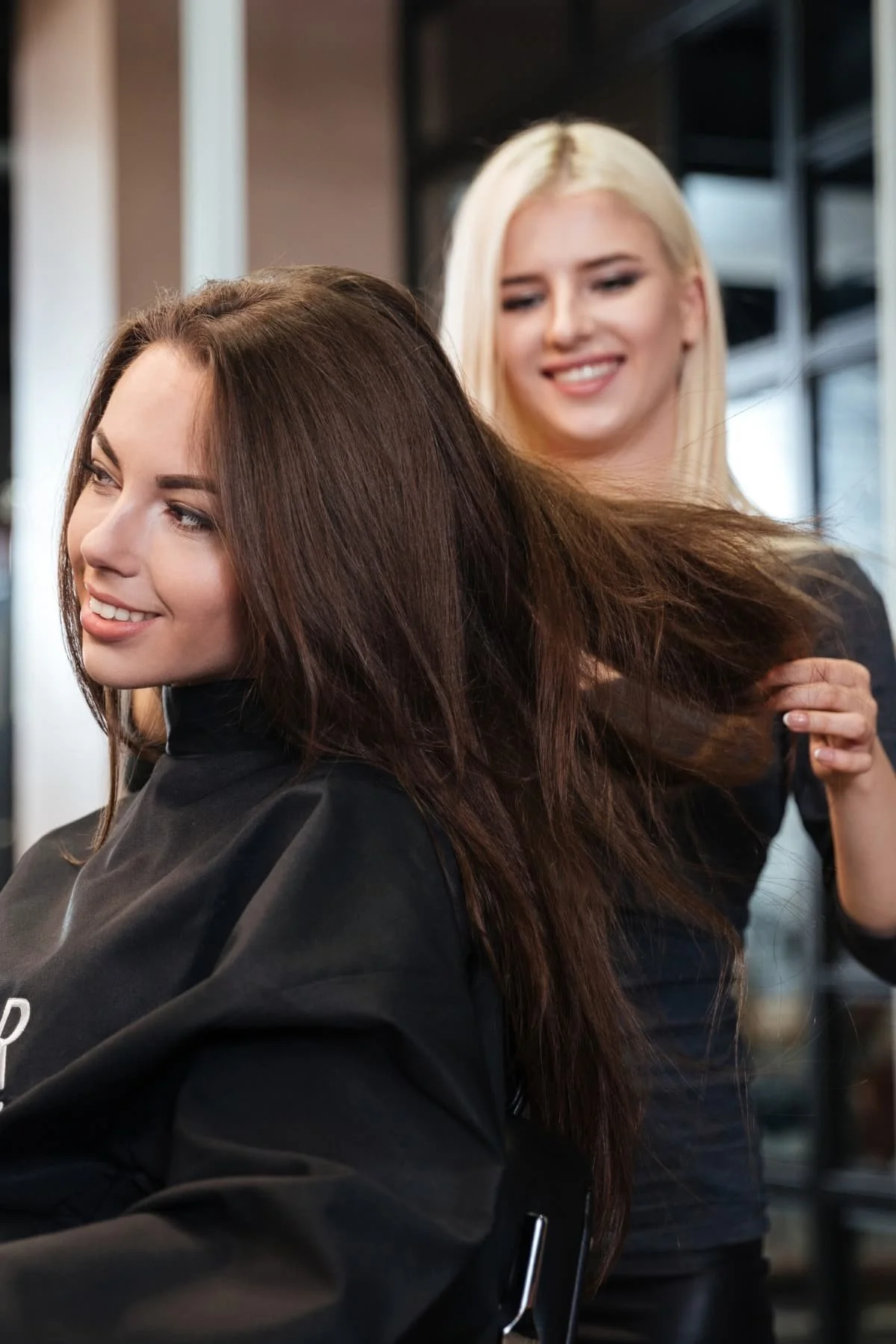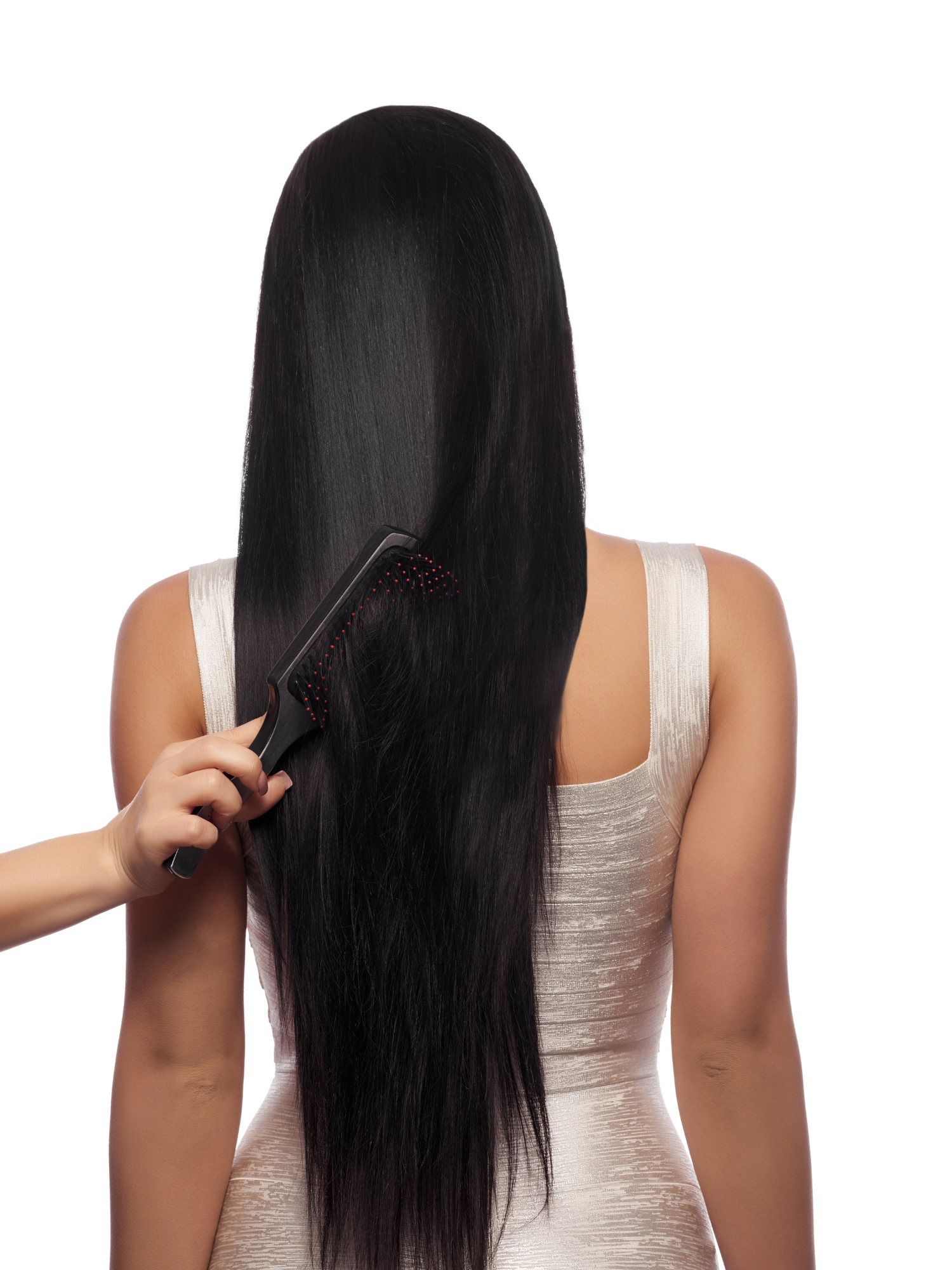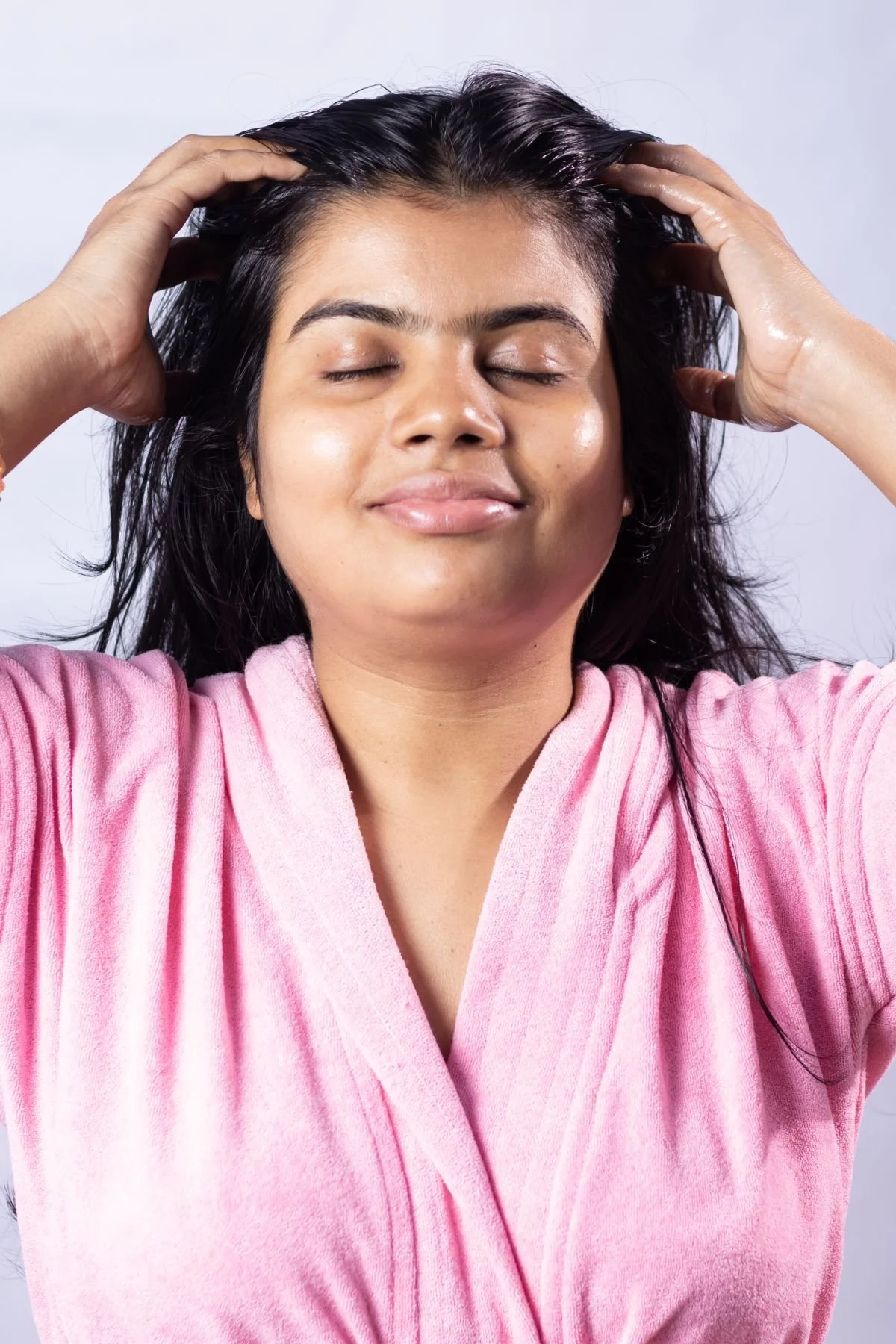How To Maintain Keratin-Treated Hair At Home (Aftercare Secrets Revealed!)
This post may contain affiliate links, which means I'll receive a commission if you purchase through the link at no extra cost to you. Please read the full disclosure here.
Achieving sleek, frizz-free hair with a keratin treatment is amazing, but keeping those results can feel like a challenge. Frequent washing, heat styling, and even certain products can strip away the treatment's benefits. If you're wondering how to maintain your keratin treated hair and enjoy long-lasting smoothness, you've come to the right place!
This guide, compiled by me, a professional hairstylist, will provide you with all the essential tips and tricks to extend the life of your treatment and keep your hair looking its best.
Choose Sulfate-Free Shampoos and Conditioners
Maintaining the silky smoothness and frizz-free look of keratin-treated hair requires careful selection of hair care products, particularly when it comes to shampoos and conditioners. One of the most critical steps in extending the longevity of your treatment is to switch to sulfate-free shampoos and conditioners. But why are sulfate-free products so crucial for keratin-treated hair
Sulfates, commonly listed as Sodium Lauryl Sulfate (SLS) or Sodium Laureth Sulfate (SLES) in ingredient lists, are surfactants found in numerous hair care products. They are effective at removing dirt and oil from hair and scalp. However, their cleansing power comes with a significant downside for keratin-treated hair. Sulfates can strip away the hair's natural oils and, more importantly, the keratin layer applied during the treatment. This not only shortens the lifespan of the smooth, sleek appearance but can also lead to dryness, frizz, and damage over time.
Sulfate-free shampoos and conditioners, on the other hand, use gentler cleansing agents that do not disrupt the natural moisture balance of your hair or wash away the keratin coating. By choosing sulfate-free products, you're ensuring that your hair retains its post-treatment gloss, health, and manageability for much longer. These products work to cleanse while preserving the integrity of your keratin treatment gently, keeping your hair looking salon-fresh.
Moreover, sulfate-free formulas are not just beneficial for maintaining keratin treatments; they're also recommended for anyone looking to maintain healthier, more hydrated hair overall. Individuals with sensitive scalps may also find relief from irritation with the switch to gentler, sulfate-free options.
Explore my handpicked recommendations for the best products for keratin-treated hair.
Opt for a Shower Cap During Showers and Baths
After undergoing a keratin treatment, one of the most critical steps to ensure its longevity is keeping your hair dry, especially in the initial days following the procedure. During this period, your hair is still absorbing the keratin, allowing it to bond fully to the hair shaft. Introducing water or moisture too early can disrupt this process, causing the keratin to wash out before it has completely set. This not only shortens the duration of your treatment's effectiveness but can also affect the overall results, leaving your hair less smooth and frizz-free than intended.
To safeguard the investment you've made in your hair, using a high-quality shower cap during showers and baths is a simple yet effective strategy. A shower cap acts as a barrier between your keratin-treated hair and moisture, ensuring that water doesn't prematurely erode the treatment. It's not just about avoiding direct water contact; steam and humidity can also penetrate your hair cuticles, affecting the keratin. Therefore, a shower cap becomes an essential part of your post-treatment hair care arsenal.
When selecting a shower cap, look for one that offers a snug but comfortable fit to prevent any moisture from sneaking in. Features such as lined edges or a waterproof exterior can further enhance protection, keeping your hair perfectly dry even during the hottest showers.
FREE DOWNLOAD
FIND YOUR PERFECT HAIRCUT FOR YOUR FACE SHAPE
The struggle is real when it comes to getting the perfect haircut! Most of the time, you never really get the haircut you want.
That stops now! This FREE GUIDE will give you the best haircut ideas for your face shape. While also breaking down how to describe the haircut to your hairstylist.
Reduce Your Hair Washing Frequency
It's a common misconception that daily washing is necessary for maintaining clean, healthy hair. However, when it comes to keratin-treated hair, less is indeed more. Overwashing can prematurely fade the effects of the treatment, stripping away not just the build-up of natural oils but also the very keratin that makes your hair smooth and frizz-free.
To preserve the silky, sleek appearance and health of your hair post-keratin treatment, it's advisable to limit hair washing to twice a week. This reduced frequency helps maintain the integrity of the treatment, ensuring that the keratin remains intact and effective for as long as possible.
Dive into my insights on avoiding hair washing mistakes for healthier hair care routines.
Incorporate Weekly Deep Conditioning Sessions
Maintaining the treatment's silky smoothness and manageability extends beyond using the right shampoos and conditioners. Incorporating weekly deep conditioning sessions into your hair care routine plays a pivotal role in nourishing and reinforcing your hair's strength.
Deep conditioning treatments are specially formulated to penetrate deeper into the hair shaft, providing a surge of moisture and essential nutrients that standard conditioners might not offer. This intensive hydration helps repair damage, reduce frizz, and keep hair looking healthy and vibrant. For keratin-treated hair, deep conditioning is particularly beneficial as it aids in replenishing the hair's natural moisture, which can be somewhat diminished following a keratin treatment.
Moreover, these conditioning sessions help to fortify the hair's natural structure, reinforcing the keratin bonds and ensuring your hair remains smooth, soft, and manageable for longer periods. It's like giving your hair a weekly spa treatment that rejuvenates and preserves the keratin treatment's effects.
Read more on how often to condition your hair in my other blog post.
Steer Clear of Salt Water and Chlorine
Two of the most notorious culprits for diminishing the lifespan of your keratin treatment are salt water and chlorine. Both elements aggressively strip away the protective keratin layer, leaving your hair vulnerable to frizz and damage.
Saltwater, with its high saline content, can sap the moisture from your hair, undoing the smoothing effects of the keratin treatment. Similarly, chlorine, commonly found in swimming pools, can severely dry out your hair and even alter its color. The chemical breakdown caused by these elements not only shortens the life of your keratin treatment but can also lead to long-term hair health issues.
However, you don't have to avoid the beach or pool entirely. Taking proactive steps can help mitigate the adverse effects. Before diving in, thoroughly rinse your hair with clean, fresh water. This simple act helps to saturate your hair, making it less likely to absorb as much saltwater or chlorine. After swimming, rinse your hair again to wash away any residual salt or chlorine that clung to your hair during your swim.
Another effective strategy is to wear a swim cap. While it may not be the pinnacle of fashion, it serves as a physical barrier, protecting your hair from direct contact with harmful elements. For those who prefer not to use a swim cap, applying a leave-in conditioner or hair oil before swimming can also provide a protective layer against saltwater and chlorine.
Protect Your Hair from the Environment
The environment plays a significant role in the health of your hair, particularly after a keratin treatment. Just as we protect our skin from the sun's harmful UV rays, our hair requires similar safeguarding to maintain its integrity and luster. Prolonged exposure to the sun can degrade the keratin treatment, leading to dryness, color fade, and frizz. This is where hair care products with UV protection become invaluable.
Incorporating hair care products that contain UV filters can significantly reduce the harmful effects of sun exposure. These products work by forming a protective barrier around the hair shaft, deflecting the damaging rays and helping to preserve the keratin treatment's smoothness and shine. From leave-in conditioners to specialized hair sprays, a variety of UV-protective products are available to suit different hair types and lifestyles.
Beyond products, physical barriers like hats and scarves offer excellent protection against UV rays and environmental pollutants. When planning to spend time outdoors, consider wearing a wide-brimmed hat or wrapping your hair in a silk scarf. These accessories not only serve as chic additions to your look but also play a crucial role in shielding your keratin-treated hair from environmental stressors.
Apply Heat Protectant Before Styling
Heat styling tools, such as flat irons, curling irons, and blow dryers, can reach temperatures high enough to break down the keratin bonds in your hair. This not only reduces the effectiveness of your treatment but can also lead to damage and increased frizz.
Heat protectant sprays are specifically formulated to shield your hair from the high temperatures of styling tools. By creating a protective barrier around the hair shaft, these sprays prevent direct heat damage, allowing you to style your hair with peace of mind. For those with keratin-treated hair, choosing a heat protectant that is keratin-friendly is crucial. These products are designed to be gentle on treated hair, providing the necessary protection without compromising the keratin.
When selecting a heat protectant, look for options that are free from sulfates and sodium chloride, which can strip the hair of its keratin coating. Many keratin-friendly protectants also contain nourishing ingredients like argan oil, keratin, and amino acids to strengthen further and protect your hair.
Adopt Gentle Drying and Styling Techniques
How you choose to dry and style your hair can significantly impact the longevity and appearance of your keratin results. Adopting gentle drying and styling techniques is essential to ensure that your hair remains smooth, shiny, and free from damage.
Air drying is one of the most hair-friendly methods, allowing your hair to dry naturally without the stress of heat. This method is particularly beneficial for keratin-treated hair, as it avoids any potential heat damage that could compromise the treatment.
If you're in a rush or prefer a more styled look, using a blow dryer with a diffuser on a cool setting is a great alternative. The diffuser helps to distribute the airflow evenly, reducing the intensity of the heat on your hair.
For a smoother finish, consider using a hair dryer with a nozzle attachment. This attachment helps to direct the airflow more precisely, ensuring even heat distribution and minimizing the chance of heat damage.
When it comes to styling with hot tools, such as flat irons or curling wands, always opt for lower heat settings. High temperatures can break down the keratin bonds in your hair, reducing the efficacy of your treatment. By keeping the heat at a minimum, you can achieve your desired style while preserving the integrity of your keratin-treated hair.
Moreover, it's important to avoid harsh styling techniques that can tug, pull, or break the hair. Always use a wide-tooth comb or a brush designed for detangling to gently work through knots or tangles.
FREE DOWNLOAD
THE ULTIMATE AT-HOME BLOWOUT STARTER KIT
Struggling to find find the right blow dryer, round brush, and hair products to give you that frizzy-free blowout? Don’t worry. This FREE starter kit has all my professional hairstylist hair tools and product recommendations!
Switch to Satin or Silk Pillowcases
One of the simplest yet most effective changes you can make to care for your keratin-treated hair involves your choice of pillowcase. Switching from traditional cotton to satin or silk pillowcases can have a profound impact on the health and appearance of your hair.
Satin and silk pillowcases are renowned for their smooth surfaces, which create significantly less friction against your hair as you sleep. This reduced friction helps in preventing the frizz and breakage that can often result from tossing and turning against more abrasive materials like cotton. Cotton, while comfortable, has a tendency to absorb moisture from your hair and skin. This can leave your hair dry and more susceptible to frizz, undoing the silky smooth benefits of your keratin treatment.
Moreover, the gentle nature of satin and silk helps to maintain your hair’s natural oils, keeping your locks hydrated and smooth. These materials also help in preserving the straightness and structure of keratin-treated hair, ensuring that you wake up with hair that’s as manageable and sleek as it was the night before.
Avoid Tight Hairstyles to Prevent Damage
Tight hairstyles, while often chic and convenient, can be detrimental to the health of keratin-treated hair. Styles such as tight ponytails, buns, braids, or any hairstyle that exerts excessive tension on the hair can put unnecessary stress on both the hair strands and roots. This stress can lead to potential breakage and weakening of the hair, counteracting the strengthening and smoothing benefits of the keratin treatment.
Keratin-treated hair is more susceptible to damage when pulled tightly, as the keratin bonds that give your hair its new structure and strength are put under strain. Continual pulling and stress can cause these bonds to break down over time, leading to frizz, split ends, and a decrease in the overall effectiveness of the treatment.
To maintain the integrity of your keratin-treated hair, it's advisable to opt for loose hairstyles that do not pull on the roots or stress the hair. Loose ponytails, gentle braids, or simply wearing your hair down can significantly reduce the risk of damage. These styles allow your hair to move freely, minimizing the strain on your hair and preserving the results of your keratin treatment.
In addition to choosing looser hairstyles, it's also important to use hair accessories that are gentle on the hair. Soft hair ties, fabric scrunchies, and clips without sharp edges are all excellent choices that minimize hair tension and prevent damage.
Minimize the Use of Hair Products
After undergoing a keratin treatment, your selection and use of hair products should shift towards a more minimalist approach. The objective is to maintain your hair's smooth, silky texture without compromising the integrity of the keratin layer. To achieve this, it's essential to choose lightweight, non-greasy hair products that don't contribute to buildup.
Heavy oils, thick pomades, and certain styling products can indeed weigh your hair down, leaving it looking greasy and lifeless. More critically, these products can create a barrier on your hair that traps dirt and residue and accelerates the breakdown of the keratin layer. This not only diminishes the sleek, frizz-free appearance of your hair but can also shorten the lifespan of your keratin treatment.
When selecting hair products post-treatment, aim for those that are specifically formulated to be keratin-treatment-friendly. These products typically avoid harsh chemicals and heavy oils, focusing instead on maintaining the treatment's effects through gentle nourishment and hydration. Lightweight leave-in conditioners, serums designed for keratin-treated hair, and non-aerosol sprays are excellent choices that provide the care your hair needs without the weight.
Furthermore, be strategic about the quantity of product you use. A little goes a long way, especially when dealing with keratin-treated hair. Applying too much product can lead to accumulation that not only weighs down your hair but also requires more frequent washing to remove, which can further strip away the keratin.
Plan Hair Coloring with Care
When it comes to coloring keratin-treated hair, timing and technique are everything. The interaction between hair color and keratin treatments can be complex, as the treatment process itself might affect the hair's color. Some keratin treatments seal the color in, enhancing its vibrancy and longevity, while others might slightly strip color, necessitating a touch-up.
The key to successful hair coloring post-keratin treatment lies in understanding the specific brand and type of keratin treatment you've received. Different formulations have different recommendations; for some, it's advisable to color your hair two weeks after the keratin treatment to ensure the color stays true and vibrant. For others, the window might be shorter, allowing for color application sooner without compromising the treatment's integrity or the color's quality.
Given these variables, consulting with a professional stylist cannot be overstressed. A stylist experienced in both coloring and keratin treatments can provide personalized advice based on your hair's condition, the keratin treatment you've received, and your desired color outcome.
FREE DOWNLOAD
HAIR COLOR GUIDE
Get the perfect hair color for your skin tone every time using this FREE guide!
Not every hair color looks best with every skin tone! If you’re thinking of dyeing your hair, be sure to consult this guide to ensure you pick the shade that’ll best enhance your features.
Monitor Your Shower Water Quality
An often-overlooked aspect of hair care is the quality of water used in the shower. Hard water, rich in minerals like calcium and magnesium, along with chlorine, commonly used to treat municipal water, can have detrimental effects on your hair. These elements can make your hair feel dry, dull, and can even strip away the smoothing effects of the keratin treatment, leading to a faster degradation of the treatment's benefits.
Installing a shower filter can be a game-changer for preserving the longevity and effectiveness of your keratin treatment. These filters work by removing or significantly reducing the levels of chlorine and hard water minerals, ensuring that the water you wash your hair with is gentle and hair-friendly. The result? Your keratin-treated hair retains its smooth, glossy appearance for longer, and you mitigate the risk of unwanted frizz and dryness.
Moreover, filtered water can contribute to the overall health of your scalp, reducing the likelihood of irritation or dryness that hard water can sometimes cause.
Handle Your Hair Gently During Styling
Handling your hair with care during styling is paramount to avoid unnecessary stress that could lead to breakage or diminish the effects of the treatment. Here are a few key recommendations for gentle hair management post-keratin treatment:
Opt for Soft Hair Ties: When pulling your hair back, choose soft, fabric-covered hair ties over rubber or plastic ones. These gentler options reduce tension and prevent the hair tie from snagging or pulling at your hair, which could cause damage or breakage.
Use a Wide-Tooth Comb or Detangling Brush: To detangle your hair, a wide-tooth comb or a brush specifically designed for detangling is ideal. These tools gently separate hair strands without tugging, pulling, or stressing the hair. Starting at the ends of your hair and working your way up to the roots can further minimize any potential for damage during the detangling process.
Minimize Heat Styling: While keratin-treated hair can withstand heat styling better than untreated hair, minimizing the use of hot tools helps preserve the treatment's effects longer. When you do use heat styling tools, always apply a heat protectant beforehand to shield your hair from high temperatures.
Be Gentle with Wet Hair: Wet hair is more susceptible to damage, so it's crucial to be extra gentle when handling it post-shower. Pat your hair dry with a soft towel instead of rubbing it, and avoid brushing your hair while it's wet. If you must detangle it while damp, use a wide-tooth comb, working gently to avoid stress on the hair.
Manage New Hair Growth with Ease
New hair growth after a keratin treatment presents a unique set of challenges, as the untreated new growth may have a different texture compared to the smooth, treated lengths. However, with the right haircare routine, managing new hair growth can be effortless, ensuring your hair remains sleek and well-maintained from root to tip.
Get Regular Trims: Trimming the ends helps prevent split ends and breakage, which can be more pronounced when dealing with two different hair textures. Additionally, keeping your hair neatly trimmed creates a cleaner, more cohesive look, making any texture differences less noticeable.
Gentle Touch for New Growth: The new growth at your roots will be your hair's natural texture, which might require a different approach than the treated lengths. Handle new growth with care, using a soft-bristled brush or wide-tooth comb to minimize stress and breakage at the roots. This gentle approach helps ensure that new growth remains healthy and strong.
Consider Root Touch-Up Treatments: For those seeking a seamless transition between new growth and treated hair, root touch-up treatments can be an effective solution. These mini-keratin treatments target just the new growth, blending it into the rest of your hair. Consult with your stylist about this option to maintain a uniform texture as your hair grows.
Consult Your Stylist for Tailored Advice
As a professional hairstylist, I cannot overemphasize the importance of seeking tailored advice from your stylist for maintaining the condition of your keratin-treated hair.
Your stylist, being familiar with the specifics of your hair type, the keratin treatment used, and your lifestyle, can offer invaluable recommendations tailored just for you. These check-ins allow for a personalized approach to hair care, ensuring that any issues are addressed promptly and effectively.
During these consultations, your stylist can assess the current condition of your keratin treatment and identify areas that may need special attention or care. They can also perform professional deep conditioning treatments specifically designed to complement the keratin in your hair, reinforcing its strength, smoothness, and shine.
Moreover, your stylist can help you adjust your home care routine to better suit your hair's evolving needs as it grows and responds to environmental factors. Whether it's introducing new products that are compatible with your keratin-treated hair or suggesting minor tweaks to your styling routine, these personalized adjustments can make a significant difference in maintaining the longevity and effectiveness of your treatment.
FAQs
Which Shampoo to Use After Keratin Treatment?
Use sulfate-free shampoos, as they are gentle and won't strip away the benefits of the treatment. Some of the best shampoos for keratin-treated hair include GK Hair Balancing Shampoo, GK Hair Moisturizing Shampoo, Marc Anthony Bye Bye Frizz Keratin Smoothing Shampoo, and It's a 10 Miracle Shampoo Plus Keratin.
Can I Comb My Hair After Keratin Treatment?
Yes, you can comb your hair after a keratin treatment. Be gentle, especially when it’s wet, and use a wide-tooth comb or a wet brush for detangling.
How to Tie Hair After Keratin Treatment?
Tie your hair using silk scrunchies or a silk hair tie to avoid marks and maintain the smoothness of your treatment.
After How Many Days Can I Use Oil After a Keratin Treatment?
Avoid using any products until you've washed your hair at least once post-treatment. Consult your stylist as recommendations can vary based on the brand of keratin used.
How to Shower After Keratin Treatment?
Use a shower cap to protect your keratin-treated hair from moisture while showering.
Conclusion
Remember, with these handy tips, you can prolong the life of your keratin treatment and experience the joy of manageable, healthy-looking hair for weeks on end. But to truly unlock its potential, you need the right hair care & styling products to build upon that base.
I've reviewed a selection of over 25+ best products for keratin treated hair in my other blogpost. Discover shampoos, conditioners, heat protectants, and various styling aids formulated to work synergistically with your treatment, keeping your hair looking its absolute best for longer.
From Care to Styling: 25+ Best Products for Keratin Treated Hair
Remember, even the most naturally frizz-prone hair can achieve smooth, sleek styles with the right product selection. Invest in your hair's continued health and shine – explore my recommendations today!



